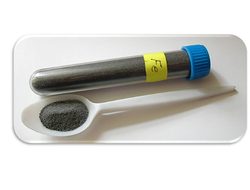Iron: An important trace mineral
Published: September 03, 2021
Iron is an essential nutrient: a mineral which your body requires in small amounts.
Although iron is found in a wide range of foods many people do not obtain sufficient amounts of this mineral from their diet.
These people may experience symptoms associated with iron deficiency which is the most common nutrient deficiency.
Almost 50% of pre-school children and pregnant women in developing countries experience iron-deficiency anaemia.
In North America up to 10% of young children, adolescent girls and pre-menopausal women suffer from iron-deficiency anaemia.
Conversely some people absorb too much iron which is also associated with adverse health effects.
As with most nutrients, both essential and non-essential, too little or too much iron poses potential health risks.
Iron has many functions within your body and is used by cells and tissues for essential metabolic activities and maintaining an adequate supply of iron is essential to good health.
Although your body does not readily excrete iron, small amounts of iron are lost from your body on a daily basis. Women experience greater iron loses due to menstruation, pregnancy and child birth.
Iron losses need to be replaced on a daily basis.
Just as there are many sources of iron there are many factors which influence iron absorption and iron excretion.
Knowing which foods are good sources of iron, and understanding the factors which influence iron absorption and excretion can help you obtain the iron that your body needs for optimum function.
Functions
The primary function of iron, and probably the most well known function, is as a component of hemoglobin and myoglobin: two proteins involved in transporting oxygen in your body.
Hemoglobin transports approximately 98% of total body oxygen in the blood.
Myoglobin is found in muscles where it functions as a temporary oxygen store which provides oxygen for muscle contractions and other metabolic activities.
Iron is also involved in energy metabolism pathways as part of cytochromes and enzymes in the electron transport chain in the mitochondria of your cells.
Other enzymes...link to the full article to learn more.
References
1.
Gropper, S.S., Smith, J.L. & Groff, J.L. (2005). Advanced Nutrition and Human Metabolism (4thEd.). Belmont, CA: Thomson Wadsworth.
2.
Whitney, E. & Rady Rolfes, S. (2005). Understanding Nutrition. Belmont, CA: Thomson Wadsworth
4.
Centre for Science in the Public Interest (2015) Nutrition Action Health Letter, October
5.
Centre for Science in the Public Interest (2012). Nutrition health letter January/February


